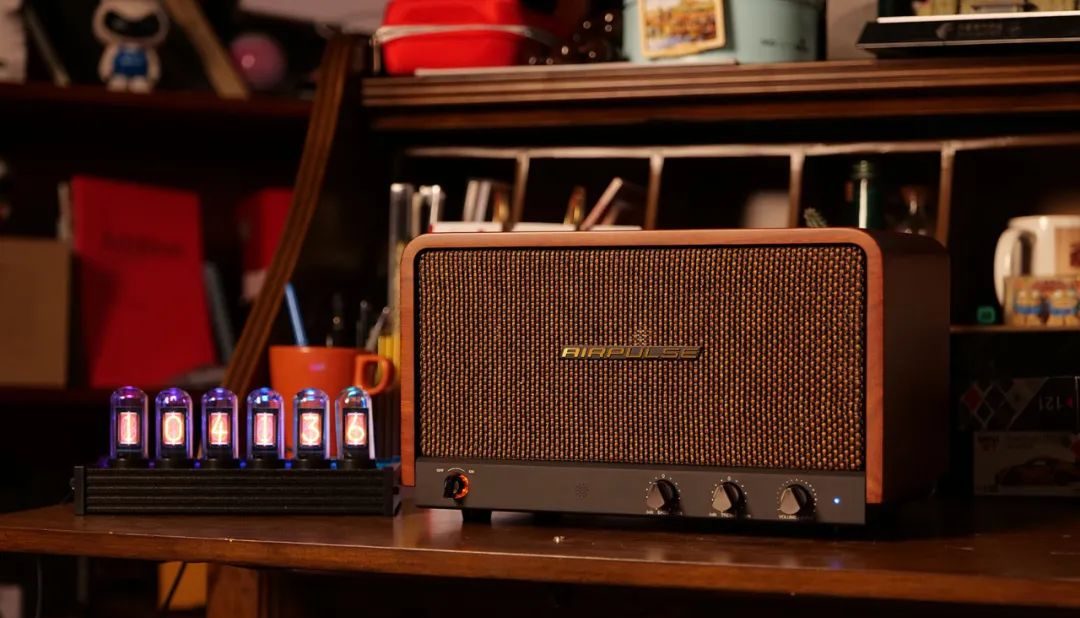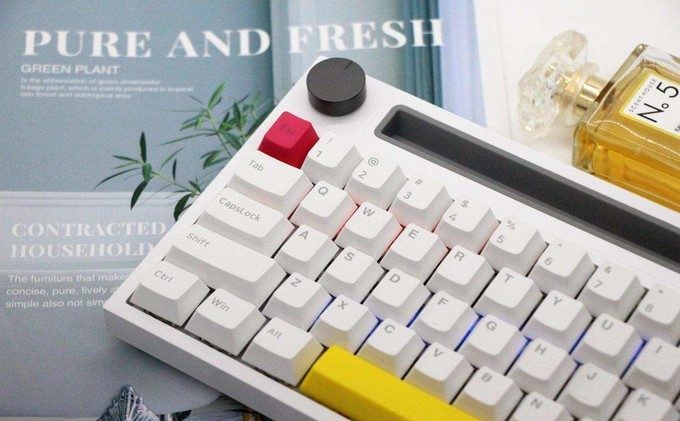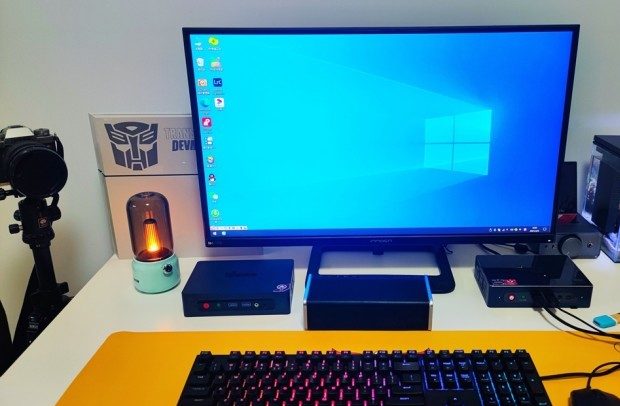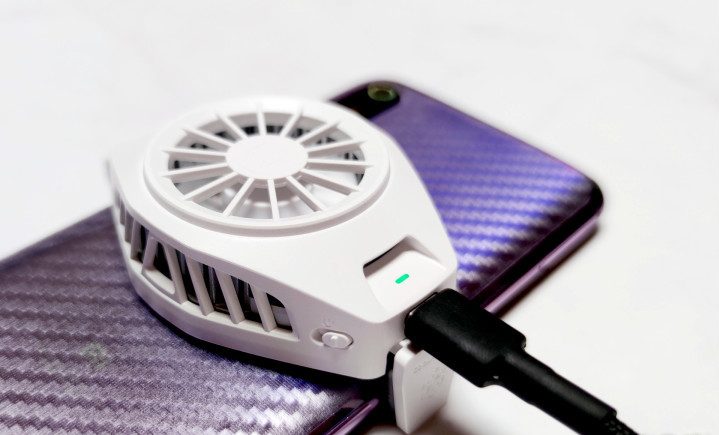Obviously, this is an all-in-one speaker that takes the retro design style. We are actually no strangers to this type of product. However, for the AIRPULSE brand, which has been taking the traditional HIFI speakers route before, P100 is indeed a brand new attempt.

Let’s take a look at the appearance of the Edifier AIRPULSE P100: the combination of the solid wood veneer square casing and the mesh cloth dust cover reminds me of an old radio. The official product photos taken by the Edifier are mostly taken with old-fashioned wooden furniture, and I feel that what it pursues is indeed the kind of retro and elegant tone.

There is no doubt that as the product of the AIRPULSE series, P100 must have exquisite workmanship. For example, I personally like the three metal knobs (high and bass compensation and switch/input selection) on the front of the speaker very much. Its surface is treated with a matte finish, which is very delicate in both visual and hand feeling. It is worth mentioning that the volume knob adopts a stepless design, and the user can continuously rotate it to obtain a smooth volume change. And this design also solves the problem of the relationship between the user using the remote control to control the volume and the knob position.

However, another big selling point of the Edifier AIRPULSE P100 should be its power switch. The same old-fashioned knob shape, after switching from OFF to ON, you will see the amber indicator light on the back of the knob slowly light up. This design makes the Edifier AIRPULSE P100 more classical in use.
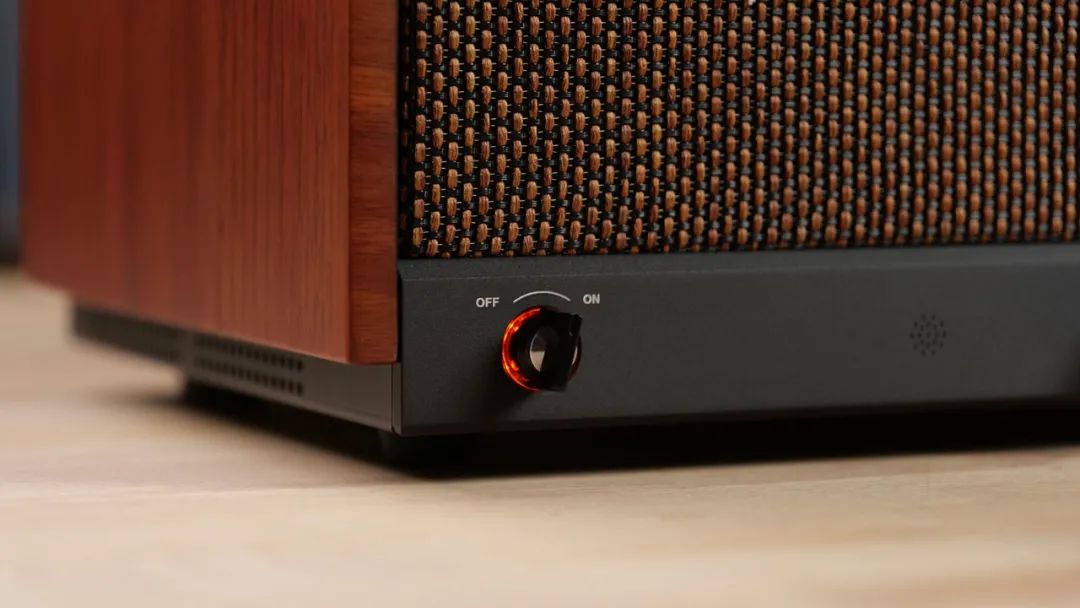
The back of the machine is very simple: in addition to the power jack, there is only a set of ordinary RCA audio inputs. Compared with other AIRPULSE products, Edifier AIRPULSE P100 obviously pursues simpleness in this respect. Users can easily connect various audio sources through the RCA to RCR and RCA to 3.5mm cables included in the box.
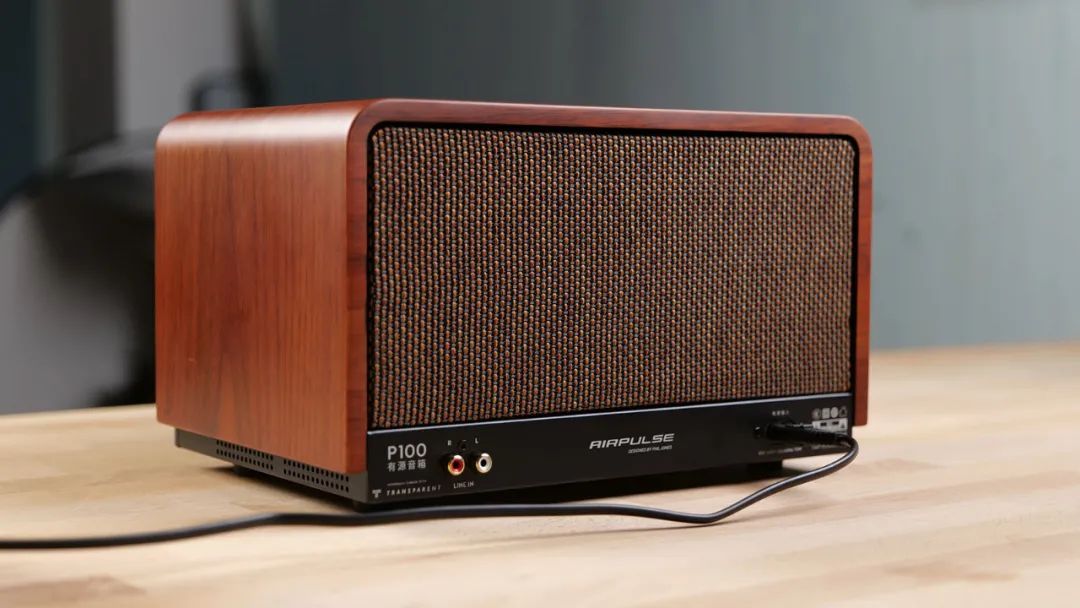
Speaking of Bluetooth, this machine uses Qualcomm’s QCC3031 Bluetooth 5.1 chip, which naturally supports aptX HD HD encoding. At the same time, the PCM1802 of Texas Instruments is used in the machine for AD conversion, and two TAS5805 chips are used as digital power amplifiers. What I am more concerned about is the speaker configuration of the Edifier AIRPULSE P100. In the promotional materials, Edifier mentions that the P100 uses two Air-Blade tweeters of which they have independent property rights. It is said that this willow-shaped tweeter has good diffusion characteristics, that is, the sound has no obvious directionality. This new unit of the Edifier can make users hear similar sound effects no matter where they stand in the room. Because Edifier AIRPULSE P100 itself does not strictly pay attention to positioning, this diffusion characteristic is particularly important.
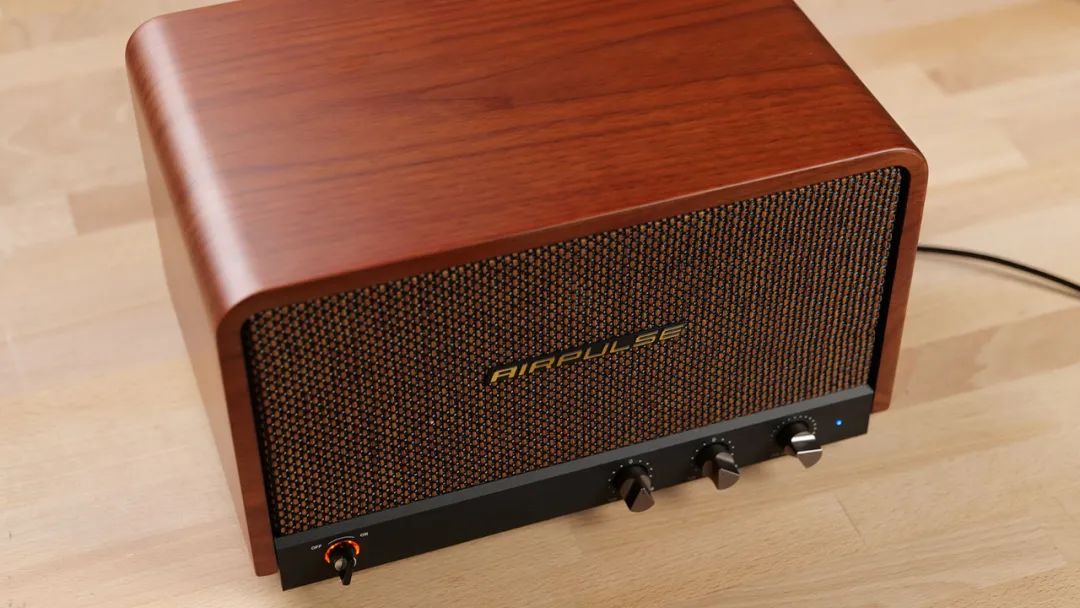
What for the low-range and mid-range of AIRPULSE P100 are a 4.5-inch long-stroke aluminum diaphragm unit and a passive radiator. This design can effectively enhance the low-frequency dive depth and sense of volume of small and medium-sized speakers so that the small box can obtain a thick low frequency beyond volume.
The Edifier especially emphasized that the mid-woofer unit is firmly placed in the box by a cast aluminum bracket, and there are metal components at the bottom of the box to ensure that the speaker is sufficiently stable and eliminate vibration and noise. This is the reason why Edifier AIRPULSE P100 does not look big but still weighs more than 5 kg.

Balanced, delicate, and elegant is my evaluation of the AIRPULSE P100 sound of the Edifier. The Edifier AIRPULSE P100 also has a relatively solid mid-frequency and flexible low-frequency, but the high-frequency can also achieve clear and rich details without being noisy. At the same time, even if you listen to this speaker at a low volume, you will not feel that it will be missing at a certain frequency, but always maintain sufficient dynamic performance.

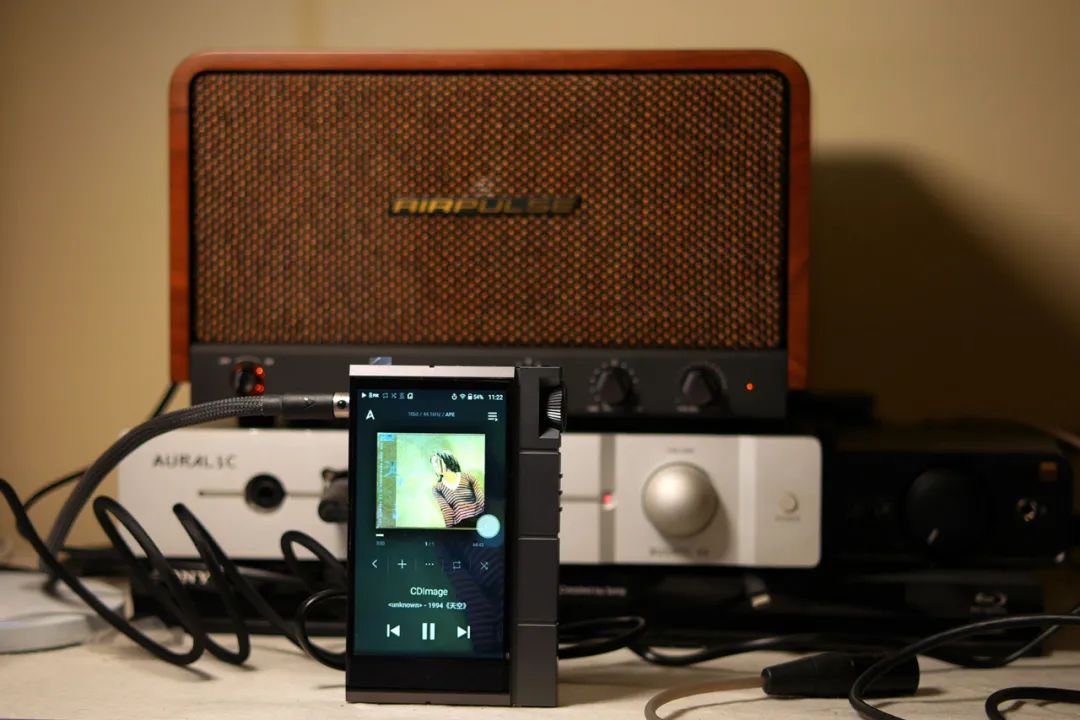
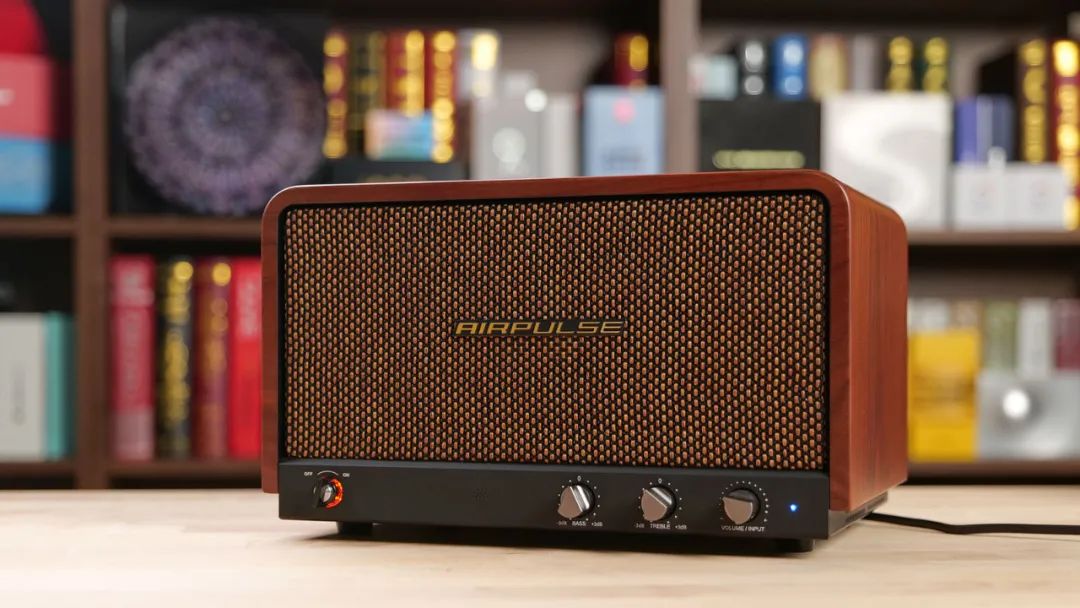
Compared to the more traditional design of AIRPULSE A100, the new integrated design may not be a HIFI speaker, but it also has excellent sound performance and more free and broad application scenarios.

